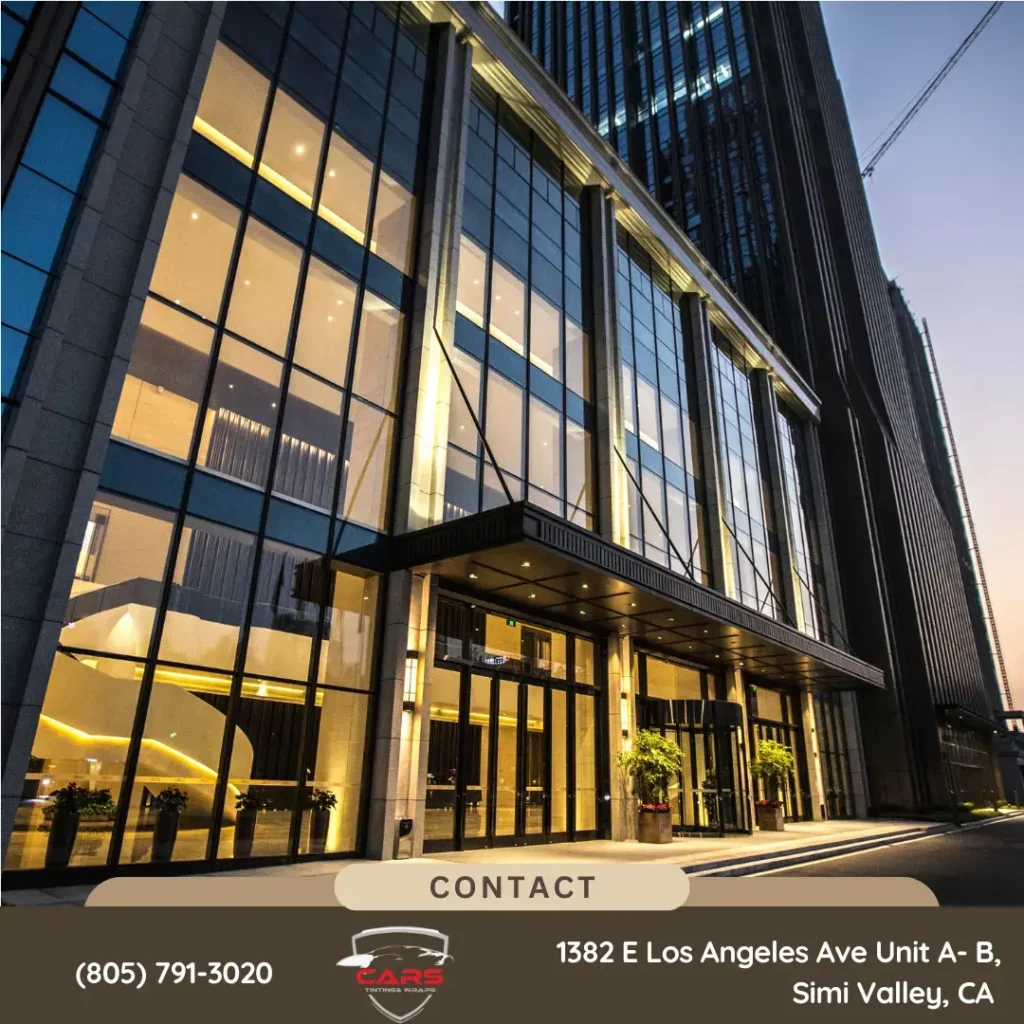
Commercial tinting boosts energy efficiency in office buildings by decreasing solar heat gain by up to 79%, reducing the cooling load on HVAC systems. By enhancing thermal insulation, it maintains internal temperatures, improving overall energy performance. Key metrics such as Solar Heat Gain Coefficient (SHGC) and Visible Light Transmission (VLT) are critical in selecting the best tinting solution, balancing heat reduction and natural light. Additionally, UV protection provided by tinting prolongs the lifespan of interior furnishings, further contributing to cost savings. Explore further to understand how specific attributes influence thermal and visual comfort.
Benefits of Commercial Tinting
One of the main advantages of commercial tinting is its significant impact on energy efficiency within a commercial building. By reducing the amount of solar heat gain through windows, commercial tinting minimizes the reliance on HVAC systems, leading to significant energy savings.
Advanced window films can block up to 79% of solar heat, which translates into a more consistent indoor climate and reduced energy consumption.
Furthermore, commercial tinting enhances thermal insulation, maintaining cooler interiors during summer and warmer interiors during winter. This dual benefit ensures that buildings are more comfortable year-round, contributing to a productive work environment.
The reduction in energy usage not only lowers operational costs but also aligns with sustainable practices, appealing to businesses committed to environmental stewardship.
Moreover, commercial tinting mitigates glare, improving visual comfort and reducing the strain on artificial lighting. This results in lower electricity usage and extends the lifespan of lighting fixtures.
The integration of commercial tinting into a building’s energy strategy provides an all-encompassing approach to energy management, supporting both economic and ecological goals. Essentially, commercial tinting is a strategic investment that fosters a connected, environmentally conscious community within the corporate sector.
Choosing the Right Tinting Solution
To fully leverage the energy efficiency benefits of commercial tinting, selecting the appropriate tinting solution is pivotal. The right choice hinges on various factors, including solar heat gain coefficient (SHGC), visible light transmission (VLT), and ultraviolet (UV) protection. These criteria collectively influence the thermal performance, visual comfort, and longevity of office buildings.
- Solar Heat Gain Coefficient (SHGC): SHGC measures how well the tinting film blocks heat from sunlight. A lower SHGC indicates better heat reduction, essential for minimizing air conditioning loads and enhancing energy efficiency.
- Visible Light Transmission (VLT): VLT quantifies the percentage of visible light that passes through the tinting film. Striking the right balance is crucial; too high a VLT may lead to excessive glare, while too low can result in an overly dim interior, necessitating additional artificial lighting.
- Ultraviolet (UV) Protection: Effective UV protection is crucial for safeguarding office interiors from harmful UV rays, which can cause fading of furnishings and contribute to skin health risks. Films with high UV rejection rates extend the lifespan of interior assets and improve occupant well-being.
Commercial tinting enhances energy efficiency in office buildings by reducing solar heat gain, minimizing glare, and improving occupant comfort. The appropriate tinting solution can lead to significant energy savings, lower HVAC costs, and increased productivity. Leveraging advanced technologies, commercial tinting offers a sustainable approach to energy management. Ultimately, selecting the right tinting solution not only optimizes thermal performance but also contributes to environmental stewardship, economic efficiency, and superior workplace conditions, fostering a balanced and sustainable built environment.